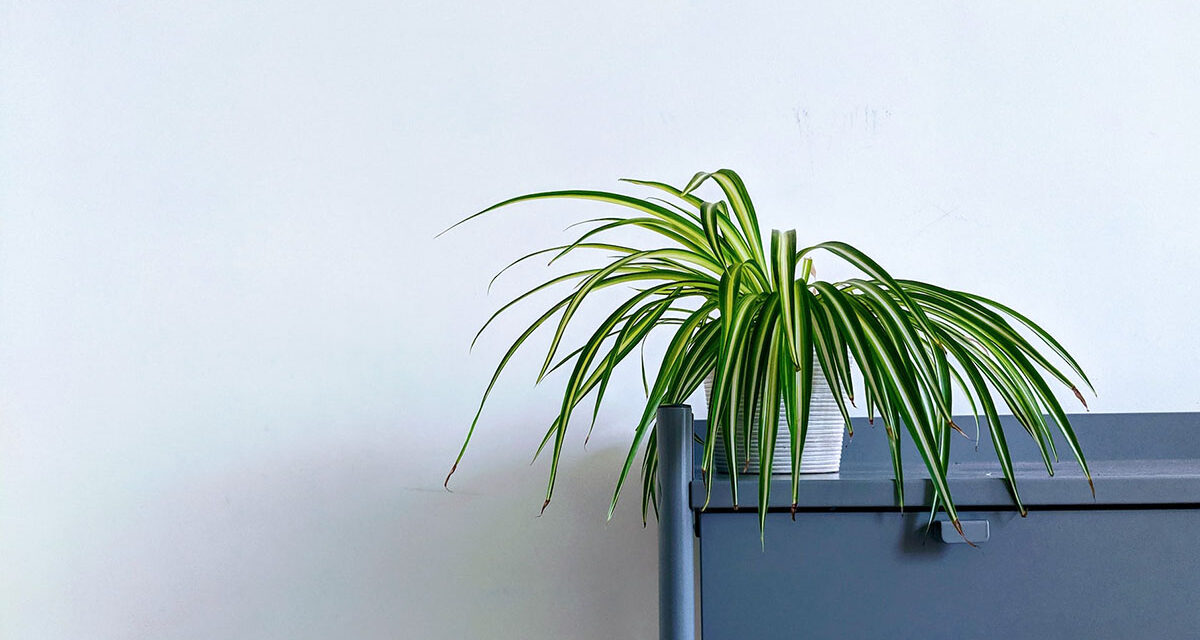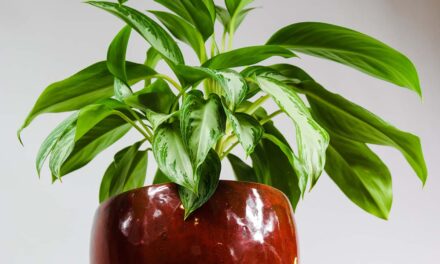Spider plants might be the most popular of all houseplants.
You’ll find them in restaurants, homes, offices, dental offices, and hotels—with their signature plantlets, or spiderettes, hanging off of the mother plant.
Variations of the spider plant include Chlorophytum comosum vittatum, and Chlorophytum comosum variegatum.
Water, Lighting & Temperature for Spider Plants
Spider plants have a few unique problems that can cause issues for the plant, but in most cases, they are hardy and able to tolerate of a wider range of conditions than most houseplants.
- Water — Water more often in the summer, and soak until the soil is thoroughly moist during each watering. Let 1″ of topsoil dry out between waterings. If you notice your spider plant is getting brown streaks down its leaves during the winter, you might consider cutting back on your watering schedule.
- Light — Spider plants benefit from ample sunlight but prefer bright indirect light vs. direct sunlight to minimize leaf burn.
- Temperature & Humidity — Misting spider plants is beneficial, but make sure to mist them in the morning, so your plant has ample time for water to dry from its leaves throughout the day. Spider plants thrive in average household temperatures, but keep your plant away from temperatures below 50 degrees Fahrenheit.
- Soil — Keep soil properly drained to minimize occurrences of root rot.
- Propagation and Repotting — If your spider plant’s roots have grown to fill its container, you can repot into a larger pot in the spring. Once plantlets reach a mature size, you can pin them down into moist, airy soil with ample moss and drainage, and cut them off the mother plant once they have started to grow roots in their new environment.
Spider plants are the first houseplant I’ve ever owned, as I was gifted a “spiderette” by a friend while in grade school. They’re richly rewarding and, with some sunlight and routine watering, will provide beauty for years and years.
How do you care for a spider plant?
If you’re not already a fan of spider plants, you will be soon! They’re one of the easiest houseplants to care for, and they’re rewarding with their little plantlets that sprout from long stems.
To care for a spider plant, follow these steps:
- Water the plant regularly, keeping the soil moist but not soggy. Spider plants prefer evenly moist soil, but they can tolerate some drying out between waterings.
- Place the plant in an area that receives bright, indirect light. Spider plants can tolerate low light conditions but grow best in bright, indirect light.
- Fertilize the plant every few months during the growing season (spring and summer) using a balanced liquid fertilizer diluted to half strength.
- You can trim the long, trailing stems and propagate them to create new plants if the plant becomes overgrown. To propagate a spider plant, cut a stem with several leaves on it and place it in a jar of water for some roots to form. Then, plant the rooted stem in potting soil.
- Watch for signs of pests, such as spider mites or aphids, and treat them with an appropriate pesticide if necessary.
Following these steps can help your spider plant thrive and keep it healthy for many years.
Are spider plants toxic to dogs and cats?
Spider plants (Chlorophytum comosum) are generally considered non-toxic to both dogs and cats, as written by ASPCA. However, as with any plant, it is possible that a pet could experience digestive upset if they eat a large amount of the plant. It’s a good idea to keep plants out of reach of pets, especially if you are unsure of their potential toxicity.
If you think your pet has eaten a potentially toxic substance, it is important to contact your veterinarian or the ASPCA’s Animal Poison Control Center for guidance.
Where do spider plants come from?
Spider plants (Chlorophytum comosum) are native to tropical regions of southern and eastern Africa, including countries such as South Africa, Mozambique, and Swaziland. They are popular houseplants that are known for their ability to thrive in a variety of indoor environments and their ability to purify the air.
Spider plants are generally very easy to care for and well-suited to grow in pots or hanging baskets. They are characterized by long, narrow leaves and small, white flowers that give rise to small plantlets on long, slender stalks. These plantlets can be easily propagated by removing them from the parent plant and planting them in soil or water. Spider plants are often grown for their attractive appearance and ability to tolerate various growing conditions.





